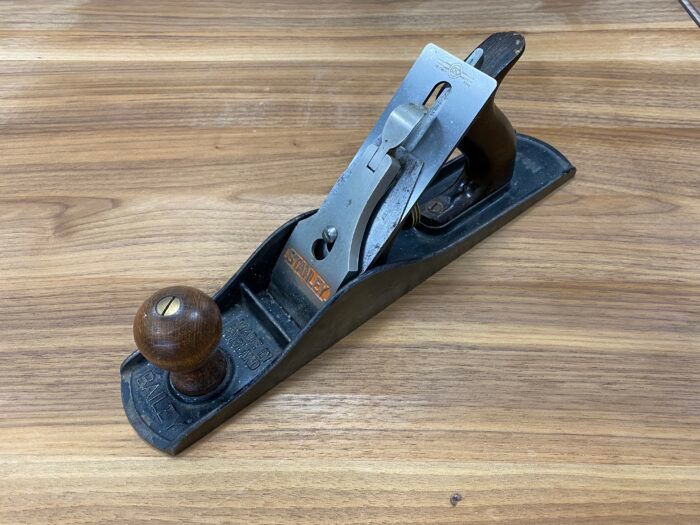Turn to the jack plane!
Boards too wide for your planer? Turn to the trusty jack plane to produce a flat surface.
Power jointers are fantastic tools for making quick work out of flattening a face and squaring an adjacent edge. This step is critical when processing rough lumber into usable components for any project you are working on. Entry-level jointers can range in price but more importantly, they are typically 6 in. wide. That means the maximum width you can safely flatten is 6 in. Bumping up to the 8-in. model of these machines often means doubling the price (at least) and in some cases a jump in power is required. Oftentimes I work with boards that are wider than this, which means that I must have another method.
We’ve all seen the social media posts of the woodworkers out there with the 16-in.-plus jointers, but very few of us have the space, power, or financial means to bring one of those beasts home. Some companies offer a 10- to 12-in. combination machine (jointer-thicknesser) but those can also be prohibitive. So, what’s a woodworker to do? The answer is simple and far more accessible than you might think. Enter the Jack!
A jack plane can make short work out of flattening boards. These planes are known by the number designations 5, 5-1/4, and 5-1/2. They are all approximately the same length, but the big difference is the blade width. The plane pictured above is my #5 and in my estimation, it is perfect for flattening boards. Mine was built between the years of the two great wars, which is ideal. Stanley planes built earlier generally lacked the adjustability we are used to in a metal plane, and planes built after WWII were made poorly due to materials and a focus on the bottom line. The only upgrade I typically add to a vintage plane like this is a new Hock blade to replace what is normally a rusted and pitted mess.
These planes are suitable for flattening work because in the end, you’re trying to create a surface flat enough to be used as a reference for the thickness planer bed. If you are working solely with hand tools, then the same is true, which will allow you to scribe a final thickness to work to. Although, if you are using hand tools alone, you likely know all of this already. Many “portable” thickness planers are available with widths ranging between 12 in. and 13 in. and a jack plane can easily flatten boards of that width. In fact, the widest surface I have flattened with a jack was close to 20 in., so there is really nothing to worry about.
The surface doesn’t need to be pristine and ready for finish, it just needs to be flat enough to not rock or shift on the thickness planer bed. It’s OK for there to be plane marks or tracks running across the reference surface. Once the opposite face has been made flat by the thickness planer, you can simply flip the board over to surface the reference side. This will give you a flat and smooth(ish) surface that is ready for joinery and eventually final surfacing and finishing.
There are various jigs available to be built to use in conjunction with a thickness planer or router, but I find the good ol’ jack plane is quick and easy to use. I prefer to spend my time making projects rather than making jigs that require storage and maintenance. You likely already have a vintage jack plane kicking around, so consider giving it a spruce up with a new blade and putting it back to work.
Fine Woodworking Recommended Products

Suizan Japanese Pull Saw

Stanley Powerlock 16-ft. tape measure

Starrett 4" Double Square






















Comments
I agree with this. Rough planing a board is the easiest way to prep it for the planer. Setup your jack plane as a fore plane. Put some camber on the iron so you can hog off some material.
The standard #5 has an advantage over the 5 1/2. It's narrower blade is much easier to push through passes that take off a lot of stock, particularly when traversing the board across its width. Chris Schwarz has an excellent video on this subject. https://www.youtube.com/watch?v=2_96gNMMc_g&t=630s
Log in or create an account to post a comment.
Sign up Log in